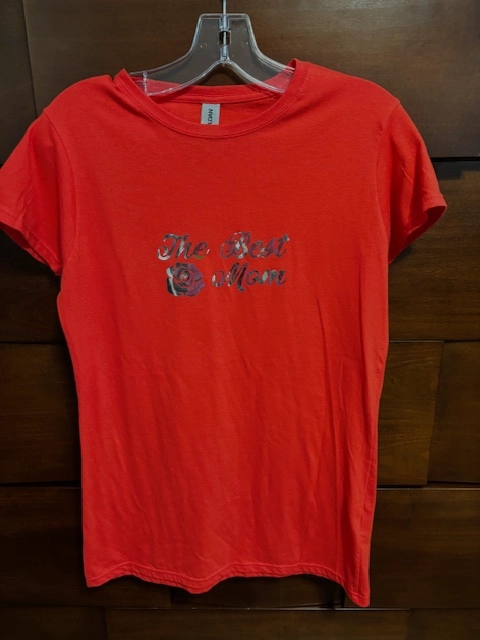The Art of Customized Needlework: Unlocking the Keys to Creating Special and Remarkable Layouts
Needlework, a craft steeped in custom and creativity, holds within its elaborate stitches the power to transform textile into a canvas of one-of-a-kind expression. The tricks to developing custom needlework designs that astound the eye and leave a long-term perception hinge on a fragile balance of strategy, imagination, and interest to detail. As we look into the world of custom-made needlework, we uncover the nuanced interplay in between thread option, stitch complexity, and design customization that boosts a mere garment to a work of art. Join us on a journey with the art of personalized needlework as we unravel the mysteries behind crafting genuinely memorable and distinctive creations.
Picking the Right Needlework Threads
When picking needlework strings, what essential aspects should you take into consideration to make certain the very best results for your customized layouts? The option of needlework string is important in establishing the last outcome of your stitched design. One of the main factors to consider is the product of the thread. Different materials such as cotton, polyester, rayon, and silk provide differing degrees of shine, sturdiness, and structure. It is important to select a thread product that complements the textile you are stitching on and lines up with the wanted appearance of the design.
Thicker threads can include measurement and texture to your style, while finer strings are suitable for complex information and tiny text. Furthermore, taking into consideration the color fastness and washability of the string is vital to make sure that your custom-made styles maintain their high quality and vibrancy over time.
Checking Out Various Stitch Strategies
To explore the world of 'Discovering Various Stitch Techniques', one should grasp the complexities and nuances that each stitching method brings to the art of needlework. Various stitch techniques not only add visual passion yet likewise add to the total texture and dimension of the design. One preferred stitch strategy is the satin stitch, which includes very closely packed parallel stitches to produce a smooth and glossy surface, suitable for filling out forms and developing strong lays out.
On the other hand, the backstitch is a versatile strategy typically used for laying out and including great details. It includes stitching backwards to produce a strong line of needlework. Furthermore, the French knot stitch includes a responsive aspect to layouts, best for producing textured accents like flower facilities or attractive touches.
Discovering different stitch strategies enables embroiderers to have fun with light, shadow, and deepness within their layouts, raising the aesthetic allure and imaginative top quality of their needlework projects. By understanding various stitching techniques, one can unlock limitless opportunities for developing distinct and remarkable custom needlework items.
Incorporating Personalized Layout Elements
Having checked out the ins and outs of different stitch methods such as the satin stitch, backstitch, and French original site knot, the emphasis currently moves Full Article in the direction of including individualized style aspects in personalized embroidery tasks. Personalized style aspects play a vital duty in making needlework tasks absolutely unique and remarkable. One means to integrate customization is by including initials, names, or considerable dates to the style. This not only adds a customized touch but additionally improves the sentimental value of the needlework piece.
One more method to include tailored design elements is by including symbols or motifs that hold unique meaning to the recipient or reflect their rate of interests and individuality. Incorporating a preferred blossom, animal, or hobby-related sign can make the needlework style more meaningful and tailored. In addition, selecting shades that reverberate with the recipient or align with the designated theme can additionally boost the customization of the embroidery job.
Mastering the Art of Shade Sychronisation

One trick aspect of color coordination is comprehending color concept. This includes knowing just how various shades communicate with each other, the feelings they share, and exactly how they can be incorporated to produce aesthetically appealing layouts. By using shade concept principles, embroiderers can produce harmonious color schemes that improve the overall look of the layout.
In addition, paying attention to contrast is vital in shade control. Utilizing contrasting shades can help specific aspects of the design pop, improve legibility, and produce an aesthetically dynamic embroidery piece. By mastering the look at this website art of shade control, embroiderers can boost their designs and create remarkable pieces that reverberate with clients and customers alike.
Enhancing Appearance With Advanced Embroidery Stitches
French knots, for example, are ideal for adding small, raised dots to your design, imitating the appearance of grains or creating a distinctive surface. Bullion knots, on the other hand, can be made use of to create twisted, ropelike components that add a lavish feeling to the embroidery. Seed sewing entails small, scattered stitches that can complete areas with a speckled texture, while turkey work produces fluffy, dimensional accents similar to pet fur or vegetation. Experimenting with these innovative embroidery stitches allows you to push the boundaries of conventional embroidery and produce truly distinct and aesthetically appealing textures in your styles.
Conclusion
To conclude, the art of custom embroidery includes a mix of picking the best strings, exploring numerous stitch techniques, incorporating personalized style aspects, mastering color coordination, and boosting appearance with advanced stitches. By comprehending and implementing these vital components, embroiderers can create one-of-a-kind and remarkable layouts that showcase their creative thinking and skill. Needlework fanatics can open the secrets to producing stunning and bespoke pieces that stand out and leave a long lasting impact.